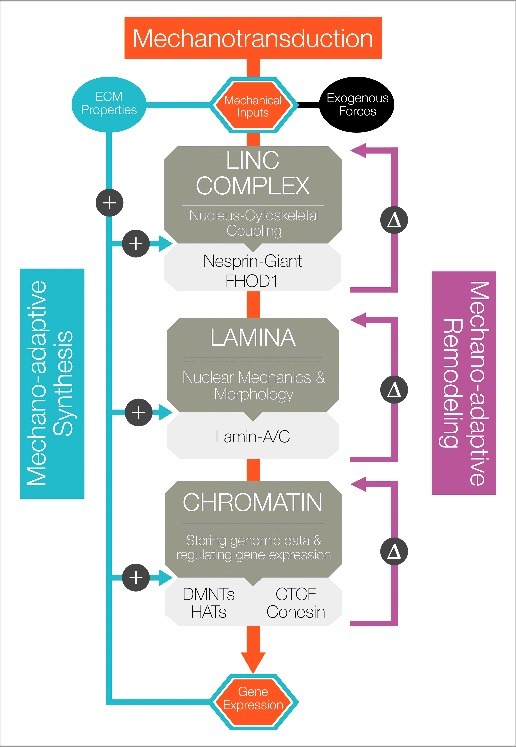Figure 2.

Mechano-Adaptation and Mechanical Memory Nuclear mechano-adaptation in stem cells can occur through both remodeling and synthetic mechanisms, with the former occurring over faster time scales than the latter. Mechanical inputs from the ECM or from exogenous loading are transmitted through the cell and to the nucleus, where each compartment can undergo mechano-adaptation, depending on the magnitude and repetition of the mechanical cues. The LINC complex responds and adapts through increased clustering of nesprins and TAN line formation (remodeling), as well as increased production of components of the LINC complex (synthesis). The lamina undergoes stiffening via reinforcement of the lamin meshwork from the nucleoplasmic pool of soluble lamin-A/C, as well as increased production of lamin-A/C. Finally, the chromatin adapts through marked changes in spatial organization, as indicated by increased condensation levels, as well as increased transcription of proteins associated with chromatin structural reinforcement and stabilization. More broadly, synthetic and reorganizational changes combine to alter the properties of each nuclear compartment, such that the next mechanical input encountered by the cell is transduced to and through the nucleus in a slightly different manner. This mechanically mediated reconfiguration of the LINC complex, lamina, and epigenome alters overall cell mechanosensing and may confer a ‘mechanical memory’ in the system.
